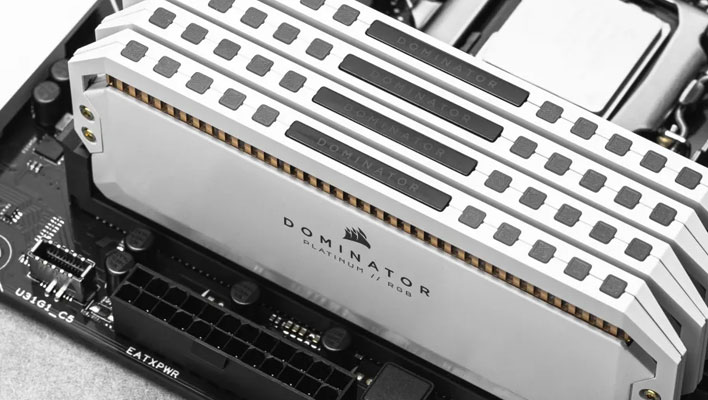Corsair Explains Why DDR5 Memory Modules Will Require Better Cooling Than DDR4

Intel's upcoming Alder Lake launch will usher in the start of the DDR5 era in the consumer space, and then sometime next year, AMD will hop on board with its Zen 4 lineup. This is going to result in higher bandwidth memory products, with transfers (or 'speed' if you prefer to call it that) starting at 6,400MT/s. The added bandwidth could come at a cost, and not just a monetary one, but also paid for in heat.
It is hard to know exactly what to expect just yet, because even though some early DDR5 memory kits landed on Amazon a few weeks ago, they have not arrived in earnest. What we do know, however, are the finalized official specifications laid out by JEDEC, and how DDR5 will differ from DDR4 in its internal makeup.
One of the key changes is the introduction of local voltage regulation. This involves an on-die power management integrated circuit (PMIC) and voltage regulation modules (VRMs), rather than tasking the motherboard with handling it all.
This was discussed during a recent episode of Corsair Tech Talk, in which George Makris, DIY Marketing Director, and Matt Woithe, Memory Product Manager, covered the evolution of DDR memory from the first specification up through DDR5. Take a look...
Makris begins to talk about this at the 6min55sec mark, in relation to Corsair's DHX (Dual-Heat Path Exchange) cooling technology, and how it could benefit hotter running DDR5 memory modules.
"DDR5 could conceivably run much hotter than DDR4. They've moved voltage regulation off the motherboard itself, and now it's on the chip. So you actually could be pumping a lot more heat into DDR5 modules," Makris explains.
How much hotter are we talking about? Unfortunately, that information is not available to us at this time. We imagine it will vary by module, depending on the voltage settting, how fast it is running, and how the module is constructed. Different memory modules could have different thermal characteristics, and we'll just have to wait and see how it all works out.
That said, the official specification for DDR5 is 1.1V. Just as we have seen in the DDR4 space, however, you can bet that memory makers will push the envelope with higher performing DDR5 kits that are validated to accept a higher voltage, to facilitate better performance. Adata, for example, recently said it plans to eventually offer DDR5-12600 kits that could require 1.6V.

